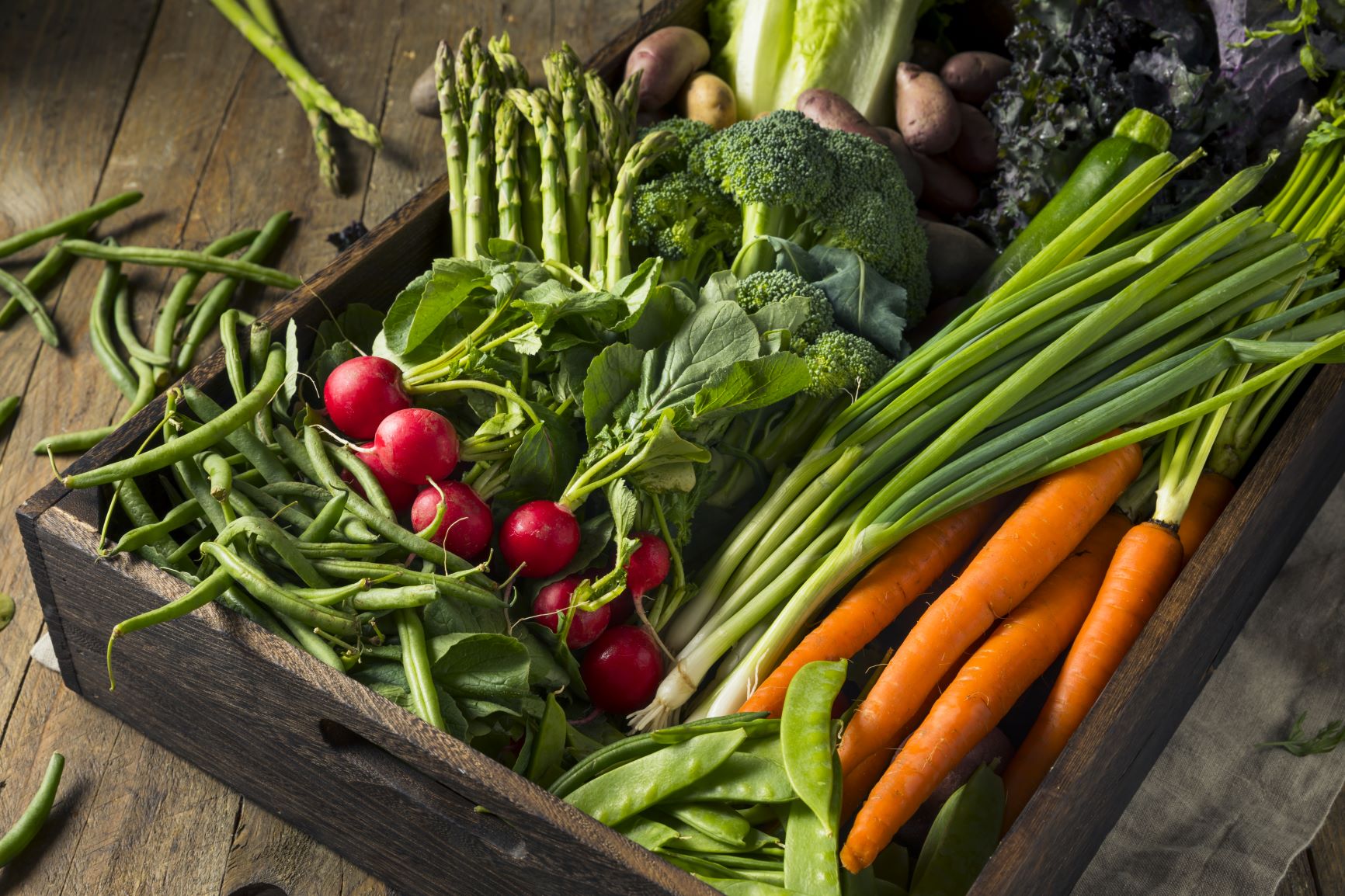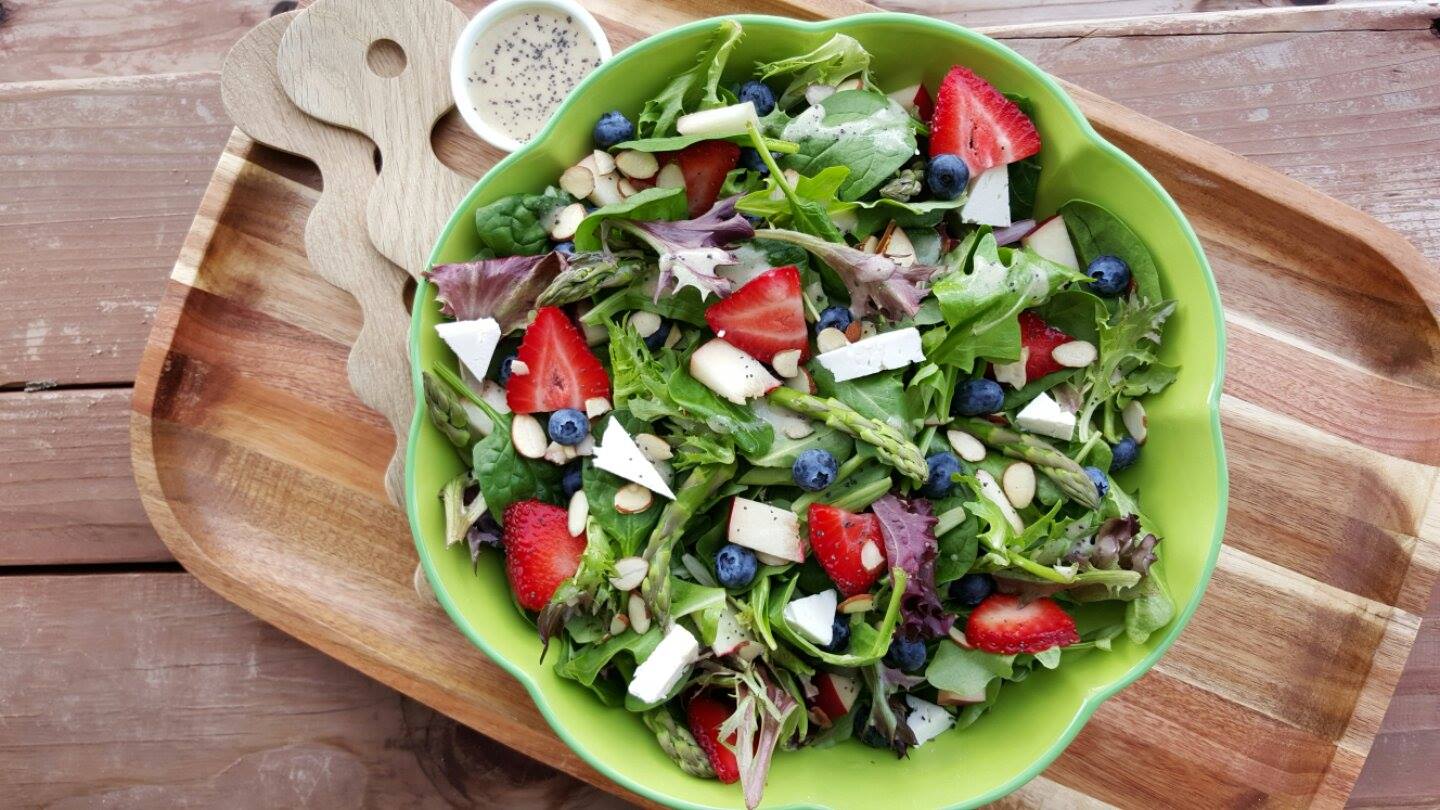Happy Spring! 🌷🐤🌼
I don’t know about you, but there’s just something about Spring that instantly brings more light to my life. Maybe it’s a combination of the increased sunshine, warmer temperatures, and nature coming into bloom. I also love the fresh produce items that can now be found in the grocery stores, which bring extra color and flavor to my meals. Sure, things like strawberries and apricots may be able to be found during other times of the year, but they taste so much better when they’re actually in season (not to mention they tend to contain more nutrition as well!).
Produce that is in season during Springtime include*
- Apples
- Apricots
- Avocados
- Asparagus
- Broccoli
- Bananas
- Cabbage
- Celery
- Carrots
- Collard greens
- Garlic
- Kale
- Kiwi
- Limes
- Lemons
- Lettuce
- Mushrooms
- Onions
- Peas
- Pineapple
- Rhubarb
- Radishes
- Strawberries
- Spinach
- Swiss chard
- Turnips
*Note that some of these items are also in season during other times of the year, but Spring is a great time to enjoy them. Also, what is in season will vary slightly from state to state based on climate.

Why does eating seasonally matter?
Seasonal produce is defined as produce which is bought and eaten close to the time it is harvested, and is grown according to its natural climate (versus a greenhouse). Seasonal food is typically fresher, tastier and more nutritious than that which is consumed out of season. While it is possible to eat seasonally but not locally, doing both is even better since eating locally grown produce supports local farmers, supports your communities economy, and has the benefit of knowing exactly where it came from (and sometimes getting to speak to the farmer themself if at a farmers market!). Eating locally also reduces your “carbon footprint” since the food wouldn’t have traveled as far or required as much packaging, and also may provide produce with less exposure to chemicals such as pesticides (if buying organic, there will be zero pesticide exposure).
Tips for Building the Perfect Spring Salad
If you’re wondering what to do with all of this delicious produce, I suggest a hearty Spring salad! You may love fresh salads, but think that they take too long to make, require too many ingredients, or don’t keep you full. Here are some tips to build a hearty, delicious, and simple Spring salad that is sure to satisfy your appetite and motivate you to get in the kitchen asap!
Tip #1- Make sure it’s filling
While salads don’t have to be a main entree, they certainly make a delicious one! Yet you’ll need to make sure it actually fills you up, so that you aren’t tempted to reach for something a bit less healthy shortly after. The best way to make sure any meal is filling is to always make sure to include all 3 macronutrients (carbs, protein, and fat). This ensures the salad is balanced and will also lead to the most nutrient density. Lettuce topped with a few vegetables and a fat-free dressing wont cut it!
Here are some great ingredient ideas from each macronutrient:
- Carbs: Any vegetable or fruit, whole grains like quinoa, starchy vegetables like sweet potatoes, and beans or lentils (which also double as a protein source)
- Protein: Fish, chicken breast, turkey, hard boiled eggs, any sort of bean or lentil, and nuts/seeds (which also double as a fat source)
- Healthy fat: Avocado, nuts/seeds, crumbly or soft cheeses, and dressings made with ingredients like hummus, tahini, olive & flaxseed oil
Tip #2- Experiment with variety
There are literally hundreds of combinations you can make with salads, so don’t be stuck with the same combo over and over. Think outside of your normal “go-to” ingredients and experiment with adding new things to your salads each time you make one. Pay attention to salads you may see on restaurant menus or online and try to mimic them if they sound good to you! Variety will ensure the salad stays appealing and exciting.

Tip #3- Focus on color & textures
More color is always better when it comes to a great salad. Try adding produce from different colors which will add a variety of nutritional benefits and also be pleasing to the eyes. In addition, try to always include a mixture of textures in your salad (crunchy, soft, moist, etc). This further helps promote satisfaction while eating it.
Here’s a delicious Spring Salad recipe I know you’ll love:
Time: ~10-30 mins Serves ~4
Ingredients:
- ~5-6 cups spinach
- 12-16 spears of asparagus, ends removed and chopped into ~2 inch pieces
- 1 cup radishes, thinly sliced
- ½ cup green peas
- 1 cup strawberries, sliced
- 1 avocado, pit removed and sliced or diced
- Protein of choice such as ~1-2 cooked and diced chicken breasts, a few chopped hard boiled eggs, cooked salmon filets, steamed lentils, cooked quinoa, etc
- ¼ cup nuts or seeds like slivered almonds, sunflower seeds, pistachos, etc
- (optional) ¼ cup of crumbly cheese such as goat, feta, or gorgonzola
- ~¼ cup of your favorite dressing (a simple balsamic vinaigrette or works great here!)
- (optional) Salt & pepper to taste
Directions:
- Wash and chop all produce.
- Cook asparagus according to preference (steaming for 3-5 mins or roasting at 400 degrees for about 20 mins both work well). Allow to cool.
- Pre-cook whichever protein source you’re using and allow it to cool.
- In a large bowl, add in the spinach and top with remaining ingredients except dressing.
- Toss well, then drizzle with dressing.
- Serve at room temperature or chilled & enjoy!
I hope you are inspired to maximize your produce intake this Spring and find doing so delicious 😊

from Clean Food Crush https://ift.tt/2KEqrcx



No comments:
Post a Comment